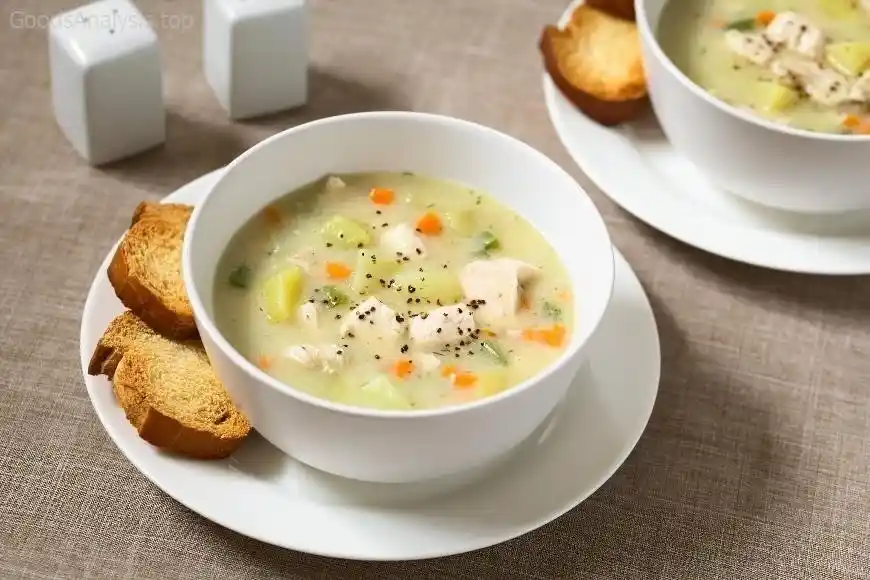Chicken soup, that timeless comfort food, is more than just a tasty dish. It’s a remedy passed down through generations and an emotional anchor during cold winter nights or when you’re under the weather. Whether you’re preparing it to nurture a loved one feeling a bit under the weather or simply indulging in a warm, wholesome meal, chicken soup is a dish that transcends cultures, offering both physical comfort and emotional warmth. Here’s how to make the perfect chicken soup, drawing on scientific research, sociological surveys, and a bit of culinary wisdom accumulated over the years.
Why Chicken Soup?
Before we dive into the specifics of making this classic dish, let’s briefly explore why chicken soup is so highly regarded in both culinary and medical circles.
- Nutritional Value: Chicken is rich in protein, essential vitamins (like B6), and minerals such as phosphorus and selenium. These nutrients help boost the immune system, promote healing, and provide energy. Adding vegetables like carrots, onions, and celery makes the soup even more nutrient-dense, supplying fiber, vitamins A and C, and antioxidants.
- Hydration: The broth in chicken soup is a great way to stay hydrated, particularly when you’re ill. This is important because dehydration can slow recovery, especially in cases of cold or flu.
- Cultural Significance: From Jewish chicken soup for the soul to the French pot-au-feu, chicken soup is a dish that has been cherished worldwide. It often carries emotional weight, reminding us of our mother’s or grandmother’s care, and offering a sense of belonging and comfort.
- Psychological Benefits: It’s not just your body that benefits. Studies have shown that comforting, familiar foods like chicken soup can elevate mood and reduce stress. This is why so many of us turn to it during challenging times.

However, not everything about chicken soup is rosy. For instance, there’s always the question of whether to use pre-made stock or make your own, and whether certain additives—like salt or store-bought ingredients—affect the health benefits. We’ll touch on that too.
Ingredients for Chicken Soup
At its core, chicken soup is simple, yet versatile. The beauty of chicken soup lies in its adaptability. You can customize it based on what you have in your pantry or how much time you have to prepare it. Here’s the basic rundown of ingredients for a traditional chicken soup:
- Chicken: You can use whole chicken parts (like a whole chicken, thighs, or breasts), or even chicken carcasses with bones for a richer broth. Bone-in cuts are preferred for making a flavorful broth.
- Vegetables: Common choices include carrots, onions, celery, garlic, and leeks. These vegetables add flavor, nutrients, and texture.
- Herbs: Fresh herbs like parsley, thyme, rosemary, and bay leaves are ideal for infusing the soup with aroma. Dried herbs can also be used in a pinch, but fresh herbs give that extra pop.
- Seasonings: Salt and pepper are a must. However, keep in mind that excessive salt can be detrimental to health, especially for individuals with hypertension. Consider using low-sodium broth or adding salt in moderation.
- Liquid: Water, homemade chicken stock, or store-bought broth can be used as the base of the soup.
- Noodles or Rice: Optional, but adding noodles or rice provides heartiness to the soup. Make sure to add them at the right time so they don’t overcook and get mushy.
- Lemon Juice (Optional): Adding a dash of lemon juice or a splash of vinegar before serving can enhance the flavor by balancing the richness of the broth.

Steps for Making Chicken Soup
Step 1: Prepare the Chicken

Start by placing the chicken (whether whole, parts, or bones) in a large pot. Cover it with cold water—enough to fully submerge the chicken—and bring it to a boil over medium-high heat. Once it starts boiling, lower the heat to a simmer and remove any foam or impurities that rise to the surface. These can give the broth an off-taste if left in.
Step 2: Add Vegetables and Herbs
Once the foam is skimmed off, add the vegetables (carrots, celery, onions, garlic, etc.) and your herbs. A classic combination is carrots, celery, and onions, often referred to as the “holy trinity” of soup-making. Drop in a couple of sprigs of thyme, a few bay leaves, and some freshly cracked black pepper. Let the mixture simmer for at least 30-40 minutes, but the longer you cook it, the richer the broth will be.
Step 3: Season and Taste
As the soup simmers, taste the broth. Add salt and pepper as needed. Be careful with the salt—taste often, and remember that some broths, particularly store-bought versions, can be quite salty.
Step 4: Add Noodles or Rice

If you’re adding noodles or rice, you can drop them in around the last 10 minutes of cooking. This ensures they cook properly but don’t overcook and become mushy.
Step 5: Remove the Chicken
Once the chicken is cooked (usually after an hour or more), carefully remove it from the pot. Let it cool slightly, then shred or chop the meat, discarding the skin and bones. Return the shredded chicken to the pot.
Step 6: Final Adjustments
Taste the soup once more, adjust seasoning if necessary, and add a squeeze of lemon juice if you want a bit of brightness. For an extra touch, sprinkle fresh herbs like parsley over the soup just before serving.
Pro Tips for Chicken Soup
- Stock vs. Broth: The difference between stock and broth lies in the bones. Stock is made by simmering bones, while broth is made by simmering meat. For the most flavorful soup, homemade stock is ideal, but using pre-made broth or stock isn’t a bad choice—just watch for sodium content.
- Clarifying the Broth: If you want a crystal-clear broth, strain it through a fine-mesh sieve or cheesecloth to remove all solid bits. This is more common in gourmet versions of the dish.
- Freezing: Chicken soup freezes beautifully. In fact, making a large batch and freezing individual servings is a great way to prepare for sick days or busy weeks.

Common Pitfalls and How to Avoid Them
- Overcooking the Chicken: If you leave the chicken in the pot too long, it can become dry and tough. Keep an eye on it, and remove it as soon as it’s tender.
- Undercooking the Vegetables: Some vegetables, like carrots, may need extra time to soften. Don’t rush the simmering process, as this can result in crunchy or underflavored vegetables.
- Too Much Salt: It’s easy to overdo it with salt, especially when using pre-made stock or broth. Try to opt for low-sodium versions and taste as you go.

Real Opinions on Chicken Soup
- Tom, 45, USA: “I’ve always made my chicken soup from scratch. The broth is everything. I don’t cut corners. But my secret? A bit of fresh ginger and turmeric. Gives it a kick and some anti-inflammatory benefits!”
- Ana, 56, Brazil: “For me, chicken soup is a family tradition. We always add some sweet potatoes for an extra layer of sweetness. It’s not just comfort food; it’s like a hug in a bowl.”
- Jamal, 29, UK: “I’m not the best cook, but even I can make chicken soup. My mom swears by making it with the whole chicken, bones and all. She says it’s the bones that make the broth magical. And she’s right!”
- Maya, 67, India: “My version of chicken soup is spicier. I add some garam masala, garlic, and a bit of chili. It clears up your sinuses and your soul!”
- Yuki, 38, Japan: “In my family, we add miso paste for a twist on the traditional broth. It makes the soup more savory and gives it a rich umami flavor.”
Conclusion
Chicken soup is more than just a meal; it’s a healing tradition, a nourishing recipe for both body and soul. Whether you’re making it for comfort, health, or simply because it’s delicious, the key is to take your time and enjoy the process. And if you’ve ever doubted the power of chicken soup, remember—science backs up the wisdom passed down through generations. It truly is good for the body and the heart.









